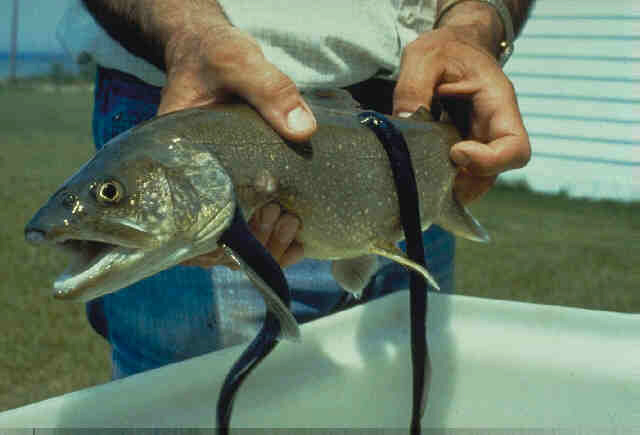
A sea lamprey attacks a fish in the Great Lakes. Credit: National Oceanic and Atmospheric Administration.
By JEFF GILLIES
Capital News Service
LANSING — While Great Lakes officials beat back the voracious Asian carp at the gates of Lake Michigan, they’re still wrangling with another nasty fish that snuck in at least 90 years ago.
Sea lampreys, eel-like parasitic fish native to the Atlantic Ocean, use a mouthful of teeth and a bony tongue to latch onto and scrape through fish flesh.
Scientists debate whether the lamprey is native to Lake Ontario, where it was discovered in 1835. But it invaded Lake Erie by 1921 and spread throughout the Great Lakes, reaching Lake Superior in 1938, according to the Department of Natural Resources.
Now researchers have new insights on a pesticide that’s kept lampreys in check for 60 years. Their findings could help fishery managers kill more lampreys in Great Lakes streams with less poison and lower costs.
Lampreys chewed up enough Great Lakes white fish and lake trout in the 1930s and 1940s to cripple commercial fisheries. They’re a smaller problem now due to an eradication program coordinated by the Great Lakes Fishery Commission.
But they’re still around, and the commission in sinking millions of dollars a year into keeping the invaders down.
Control methods include barriers that block spawning grounds and a sterilization machine that renders male lamprey impotent.
But the program’s real muscle is TFM, a pesticide applied to 250 streams around the Great Lakes. It kills lamprey larvae and leaves other fish species unharmed.
“It’s been the workhorse of the program since 1958 when it was first used,” said Marc Gaden, the fishery commission’s legislative liaison.
The fishery commission credits TFM with knocking the lamprey population down by 90 percent. It’s clear that it works. What’s less clear is exactly how.
Scientists have suspected that the pesticide keeps lamprey from producing ATP. That’s a compound that fuels cellular work in all living things, said Mike Wilkie, assistant professor of biology at Wilfrid Laurier University in Waterloo, Ontario.
“Everybody needs ATP to survive,” he said. “Without ATP, you die.”
And so do sea lampreys. But the only proof that the pesticide cuts off the supply of this critical cellular fuel came from experiments done on rats, Wilkie said. “We didn’t really have a good idea about the exact mechanism in terms of lamprey.”
Now scientists do. A new study by Wilkie and colleagues from two other Ontario universities foiund that lamprey larvae exposed to TFM can’t produce the fuel as easily as TFM-free lampreys.
A clearer picture of exactly how TFM kills lamprey could lead to Great Lakes managers killing more larvae with less of the chemical.
That would provide both economic and environmental benefits. For example, in 2008, the fishery commission spent $3.7 million on TFM.
Gaden said, “If you can do it cheaper and have the same level of lamprey control spending less money, it’s certainly a strong motivator.”
And though TFM is relatively harmless to fish other than lamprey, it sometimes kills other aquatic organisms like insects and amphibians. Insect populations always recover after the pesticide breaks down, but less pesticide in the water is still a good thing, Wilkie said.
“Anytime you lower the amount of pesticide you’re going to basically protect other organisms,” he said. “If they can use less, that would tend to make everybody reasonably happy.”
Jeff Gillies writes for Great Lakes Echo